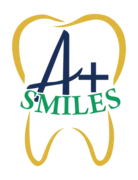Orthognathic surgery, also known as corrective jaw surgery, aims to correct abnormalities of the jawbones in order to realign the jaws and teeth to improve overall function. This surgery can also improve the outside appearance of your face.
If you have problems with your jaw that cannot be corrected with orthodontic treatment alone, corrective jaw surgery may be considered. Your braces will be on before surgery and during recovery, until you are completely healed and proper alignment has occurred. To make sure you are getting the most out of your treatment, your orthodontist will work with your surgeon.
Corrective jaw surgery should only be performed when the jaw has completed its growth. This occurs around 14 to 16 years for females and 17 to 21 years for males.
What does corrective jaw surgery improve?
There are many benefits to corrective jaw surgery, including:
- Improved chewing and biting
- Correction of swallowing problems
- Improved speech
- Reduced wear and tear on teeth
- Correction of an open bite, where the molars don’t touch the front teeth
- Repaired facial imbalance, such as small chins, underbites, overbites, and crossbites
- Improved ability for lips to close completely and comfortably
- Relief of pain associated with temporomandibular joint (TMJ) disorder or other jaw problems
- Repaired facial injuries or birth defects
- Relief for obstructive sleep apnea
Where can jaw surgery be performed?
There are three sections a surgeon can work on:
- Upper jaw
- Receded or protruding upper jaw
- Crossbite
- Too much or too little of your teeth showing
- Open bite
- Facial growth of the middle of the face
- Lower jaw
- Receded lower jaw
- Protruding lower jaw
- Chin: Surgery of the chin can correct patients with a small chin. Small chins often accompany a severely receded lower jaw, which can cause many of the problems listed above. Typically, the altering of the jaw as well as restructure of the chin can be done in the same surgery.
